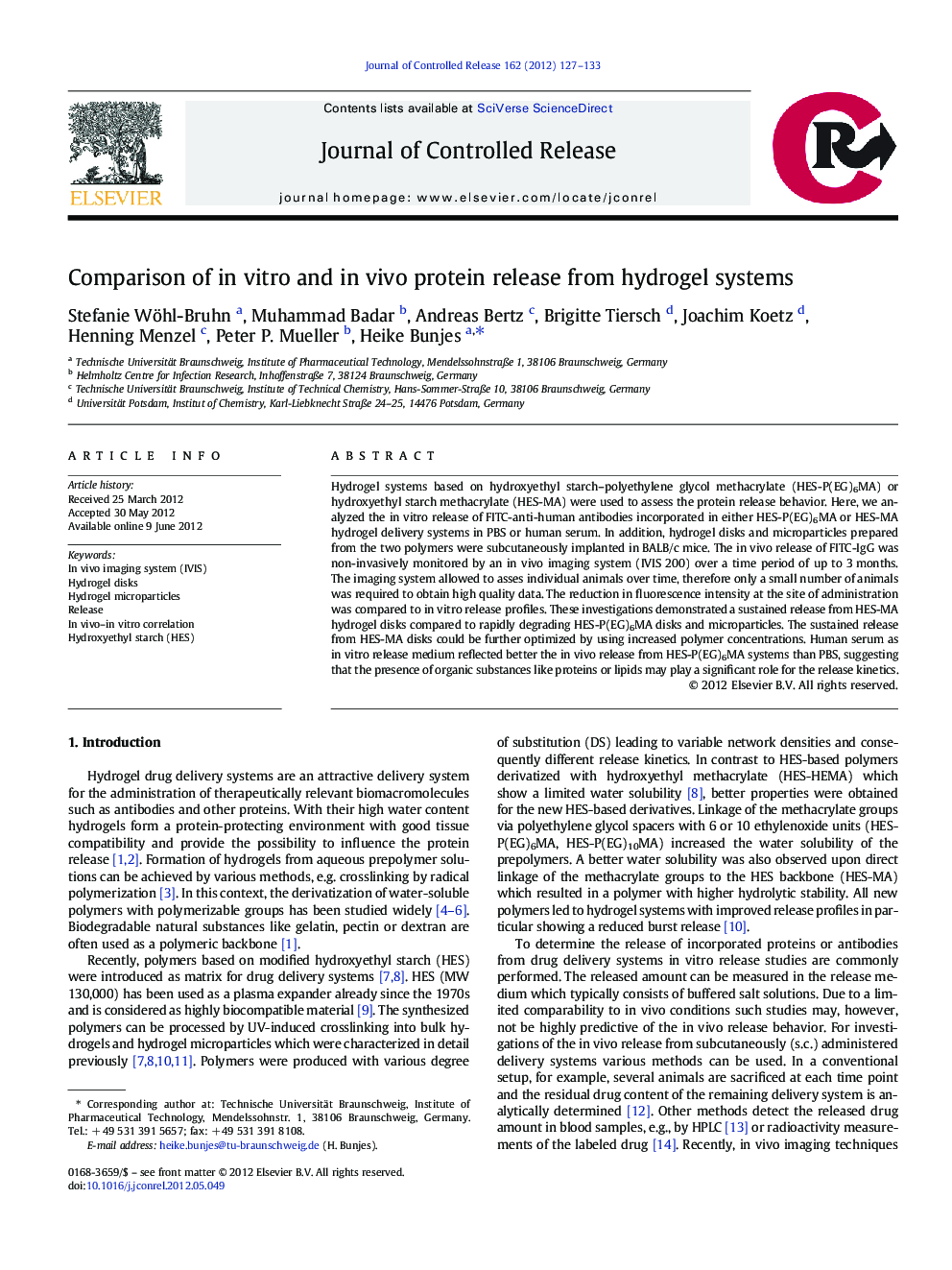| کد مقاله | کد نشریه | سال انتشار | مقاله انگلیسی | نسخه تمام متن |
|---|---|---|---|---|
| 1424578 | 986730 | 2012 | 7 صفحه PDF | دانلود رایگان |

Hydrogel systems based on hydroxyethyl starch–polyethylene glycol methacrylate (HES-P(EG)6MA) or hydroxyethyl starch methacrylate (HES-MA) were used to assess the protein release behavior. Here, we analyzed the in vitro release of FITC-anti-human antibodies incorporated in either HES-P(EG)6MA or HES-MA hydrogel delivery systems in PBS or human serum. In addition, hydrogel disks and microparticles prepared from the two polymers were subcutaneously implanted in BALB/c mice. The in vivo release of FITC-IgG was non-invasively monitored by an in vivo imaging system (IVIS 200) over a time period of up to 3 months. The imaging system allowed to asses individual animals over time, therefore only a small number of animals was required to obtain high quality data. The reduction in fluorescence intensity at the site of administration was compared to in vitro release profiles. These investigations demonstrated a sustained release from HES-MA hydrogel disks compared to rapidly degrading HES-P(EG)6MA disks and microparticles. The sustained release from HES-MA disks could be further optimized by using increased polymer concentrations. Human serum as in vitro release medium reflected better the in vivo release from HES-P(EG)6MA systems than PBS, suggesting that the presence of organic substances like proteins or lipids may play a significant role for the release kinetics.
Figure optionsDownload high-quality image (216 K)Download as PowerPoint slide
Journal: Journal of Controlled Release - Volume 162, Issue 1, 20 August 2012, Pages 127–133